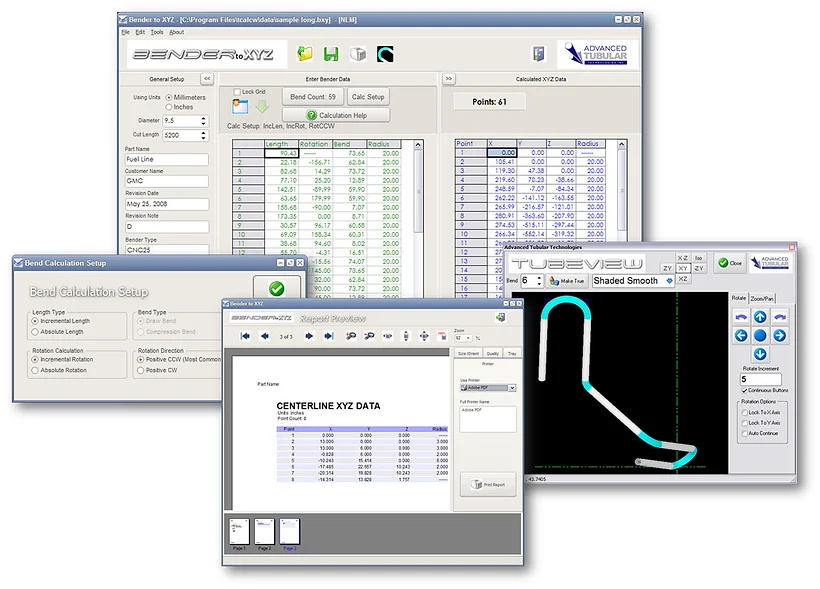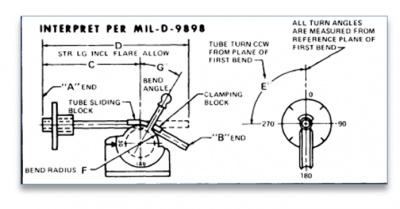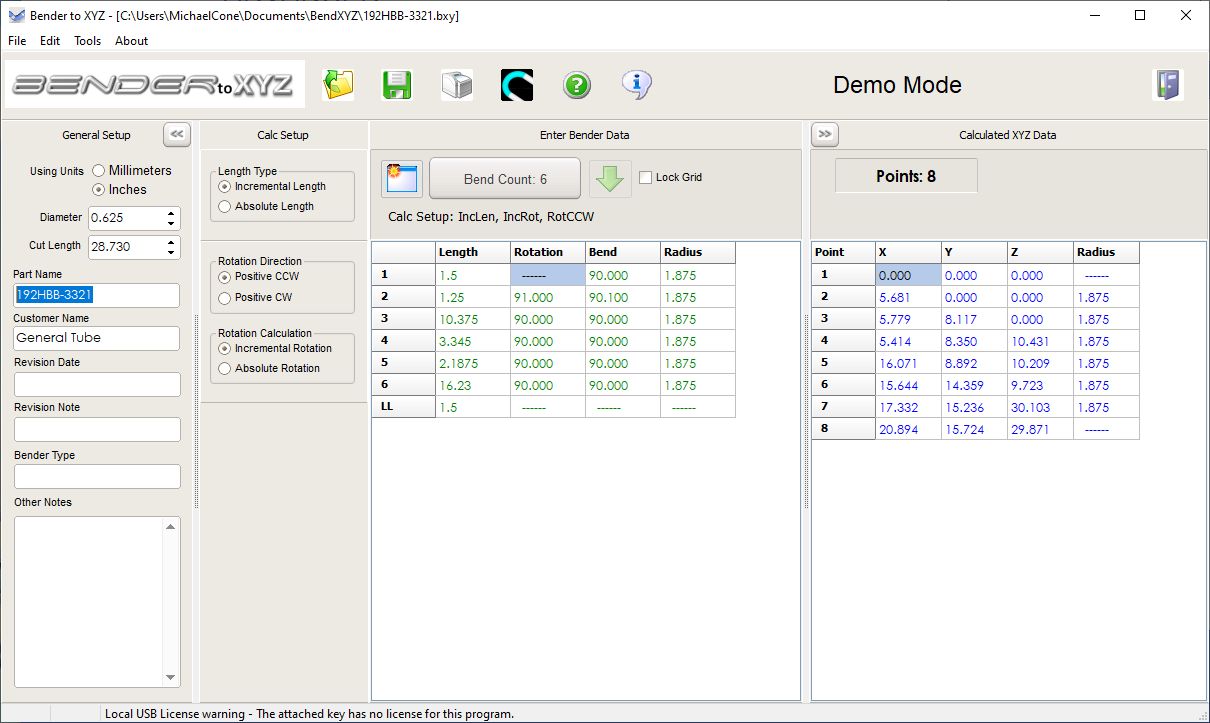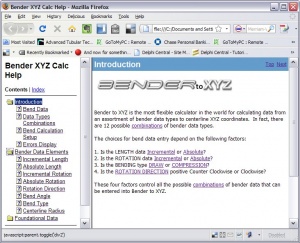Contact Us
- Support
- Bender to XYZ
- Bender to XYZ
Bender to XYZ

Bender to XYZ is software that converts bender data to XYZ coordinates that represent the centerline of a tube shape.
This is the most flexible reverse-calculation conversion software available anywhere. Convert any of 12 different bend setups to XYZ data.
|  |
Bender Formats Converted
Because you can choose the type of data that is entered in each column of data, the software can calculate at least 12 different combinations of data (12 different styles of bender data charts).
See this chart for the combinations:
If you have bender data in any of these formats, you can calculate back to XYZ coordinates in space.
| 
|
Bend Data Type | Description |
LRA, YBC (Eaton Leonard), FPB (Chiyoda), FRB (Advanced Tubular), PRB (MiiC) | Standard CNC Draw Bender. Draw bending is where the tube is "drawn" around a rotating bend die. The opposite of draw-bending is compression-bending. |
Military 1, Conrac, Lockheed |  Absolute(accumulated) LENGTHs and ROTATIONS and draw-bending Absolute(accumulated) LENGTHs and ROTATIONS and draw-bending
|
Military 2 | This is the same as Military 1, except with compression bending. |
Compression-Bending Applications | This bend data type is through pushing the tube around a stationary bend die with a wiper. |
Angular Data Input Possibilities
Bender to XYZ allows for entry of ANGLE data using either a standard floating-point format or the "degrees-minutes-seconds" format. Examples of valid entries are:
Angular Entry Type | Example |
1 - Decimals | 90.51 |
2 - Degrees-Minutes-Seconds | 90d30'30" is converted to 90.51 when the user exits the cell. |
3 - Any Combination of Degrees, Minutes, and Second | Any part of the DMS value may be left off, and the floating-point value will still be calculated properly. For example, these are values: 90d = 90.00, or 90d30' = 90.50, or 90d30" = 90.00 (when rounded to two places). |
Demo Version
You can download a demo version that outputs randomized XYZ data. The licensed version (purchased) calculates precise XYZ data. The demo version displays "Demo Mode" at the top of the user interface.
|  |
Help Reference






